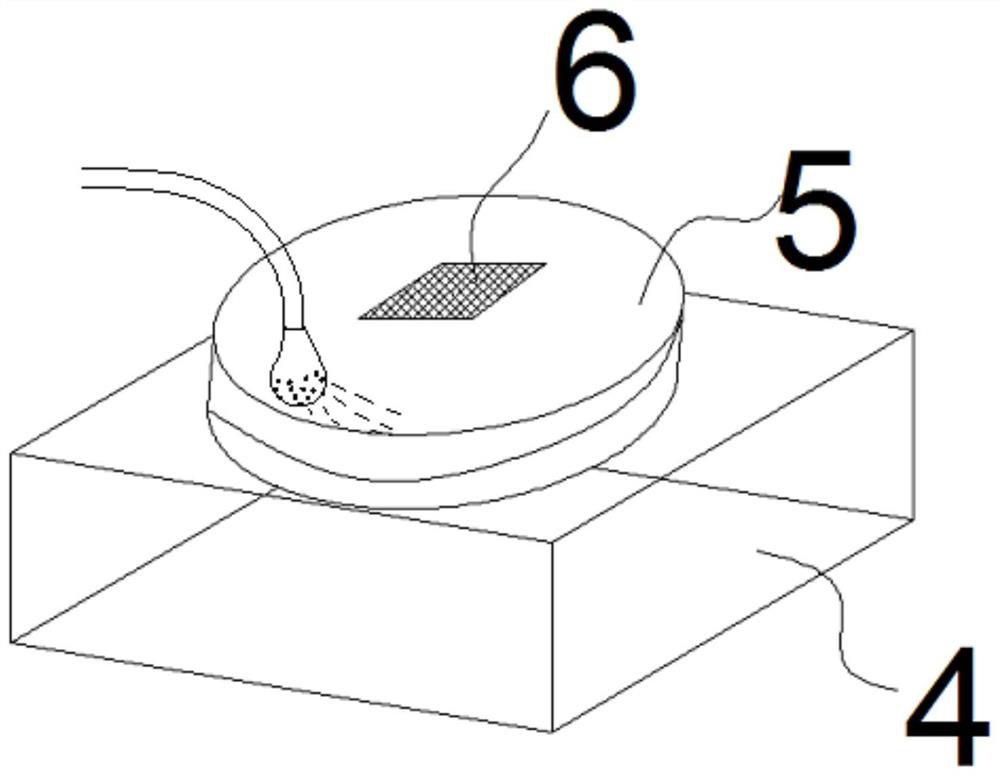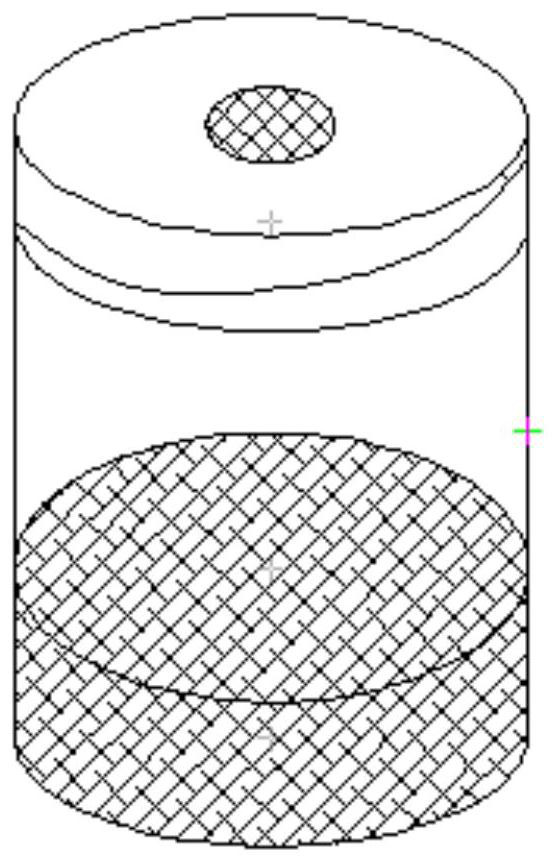Industrialized breeding method for sterile cordyceps sinensis host larvae
A technology for host and larvae of Cordyceps sinensis, which is applied in the field of industrialized breeding of sterile Cordyceps sinensis host larvae, can solve the problems of limited infection rate of Cordyceps sinensis host larvae, high mortality rate of Cordyceps sinensis host larvae, inability to achieve high yield of artificially cultivated Cordyceps sinensis, etc. The effect of survival
- Summary
- Abstract
- Description
- Claims
- Application Information
AI Technical Summary
Problems solved by technology
Method used
Image
Examples
Embodiment 1
[0028] An industrialized feeding method for sterile Cordyceps sinensis host larvae. After preparing sterile eggs, sterile feed, and sterile feeding devices prepared in advance, they are placed in a sterile room, and after no pollution is detected, the door in the sterile room is opened. Fan, open the aseptic feeding device, transfer the prepared aseptic feed to the aseptic device with aseptic tools, place the sterile eggs on the aseptic feed, fasten the top cover of the aseptic device, and place it in the aseptic production plant area Inside.
[0029] The preparation of the above-mentioned sterile eggs includes placing the mating eggs that are expected to hatch in three days in a sterile egg disinfection device, immersing them in a chlorine-containing disinfectant with a concentration of 100-300ppm for 5-20 minutes, taking them out, and rinsing them with sterile water. Disinfectant on the surface of worm eggs to obtain sterile worm eggs;
[0030] Such as figure 1 The aseptic...
Embodiment 2
[0041] The rest of the method steps are the same as in Example 1, only the aseptic feed of the following formula is added in the sterile feeding bottle, formula 2: agar 1-1.5 g / 100 ml water, carrot powder 3-5 g / 100 ml water, fern powder 2.5-3.5g / 100ml water, Ph6.0-6.5. After multiple cycles of feeding, observe the growth of the larvae.
Embodiment 3
[0043] The rest of the method steps are the same as in Example 1, only the aseptic feed of the following formula is added in the aseptic rearing bottle, formula 3: agar 1-1.5 g / 100 ml water, carrot powder 3-5 g / 100 ml water, Polygonum versicolor powder 1.5-2.5g / 100ml water, Ph6.0-6.5. After multiple cycles of feeding, observe the growth of the larvae.
[0044] The larvae raised according to the method of the present invention are ground and cultivated on the culture medium after the whole worm is ground, and then the high-nutrition bacteria and fungal culture medium of various formulas are carried out to detect the sterility of the aseptic larvae. The results are as follows: Figure 4-5 As shown, it can be seen from the results that fungi and bacteria did not grow in the culture medium, and thus the results of the culture of sterile worms were in line with expectations.
[0045] Bacterial medium formula control group 1: 1. Agar 1.5g / 100ml water + Cordyceps sinensis bat moth l...
PUM
 Login to View More
Login to View More Abstract
Description
Claims
Application Information
 Login to View More
Login to View More - R&D
- Intellectual Property
- Life Sciences
- Materials
- Tech Scout
- Unparalleled Data Quality
- Higher Quality Content
- 60% Fewer Hallucinations
Browse by: Latest US Patents, China's latest patents, Technical Efficacy Thesaurus, Application Domain, Technology Topic, Popular Technical Reports.
© 2025 PatSnap. All rights reserved.Legal|Privacy policy|Modern Slavery Act Transparency Statement|Sitemap|About US| Contact US: help@patsnap.com



